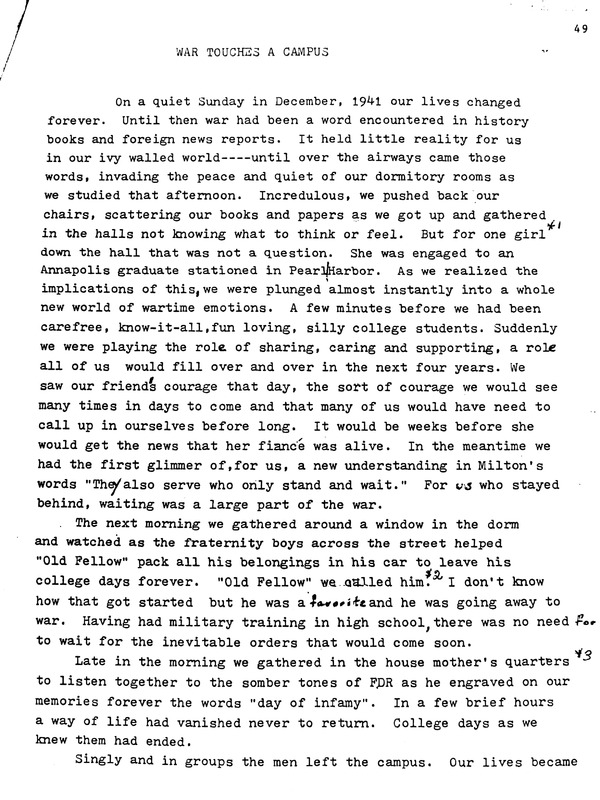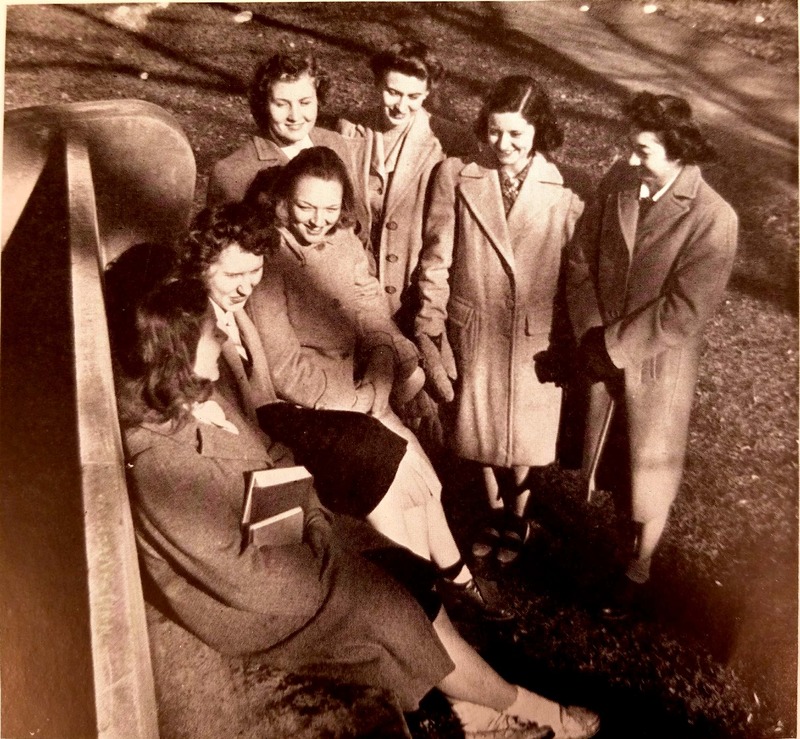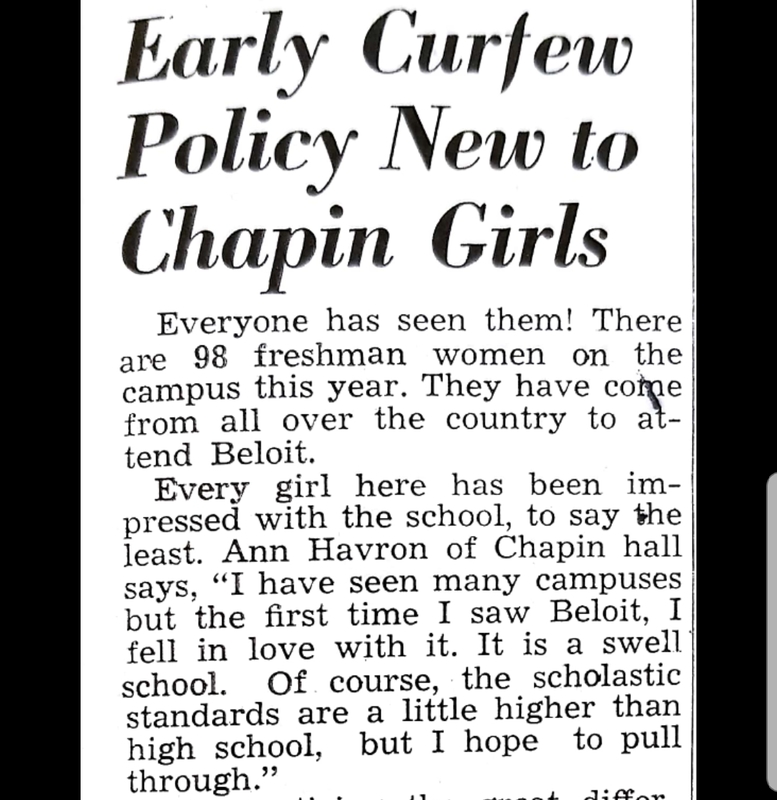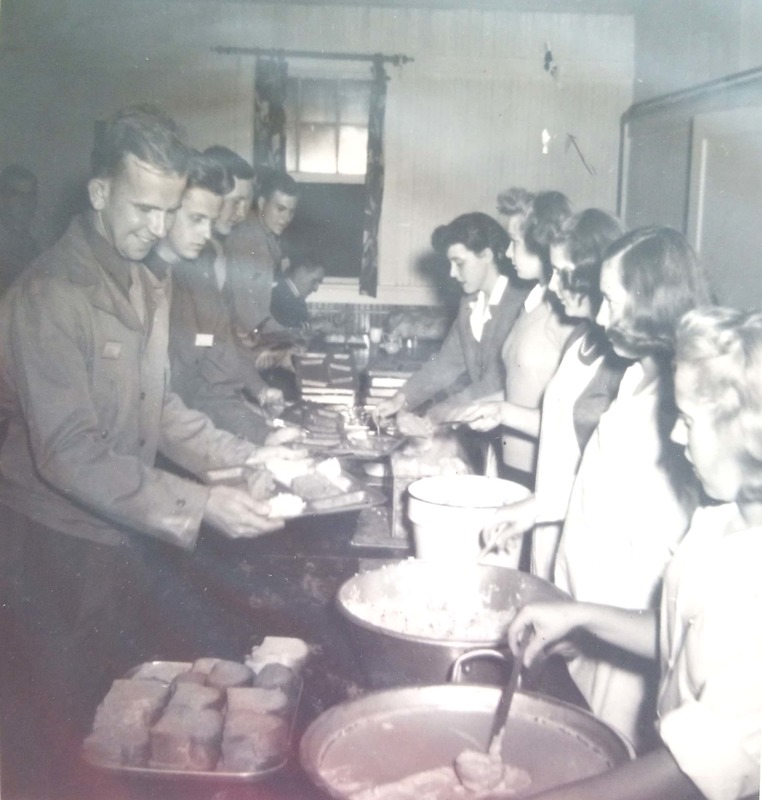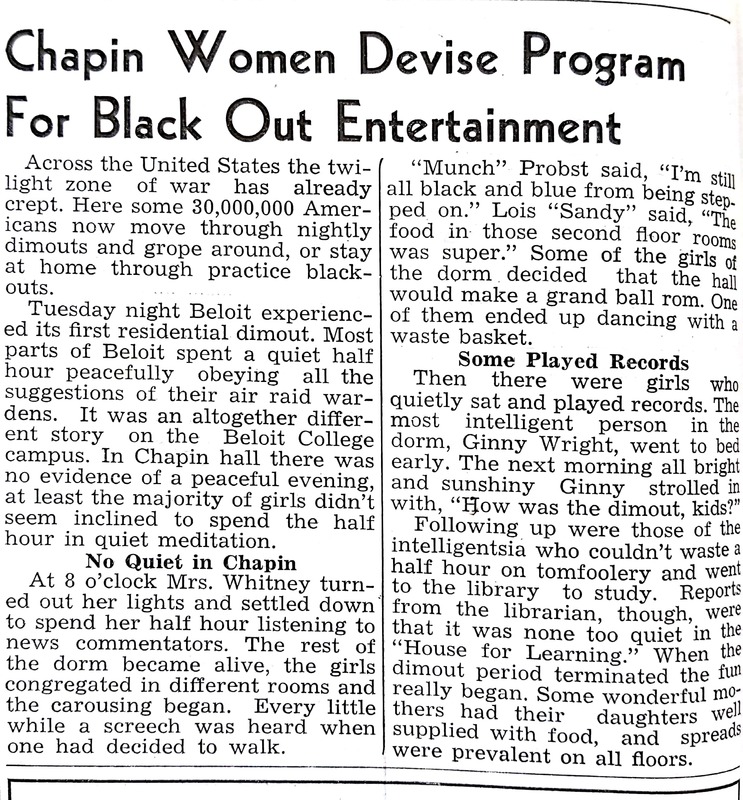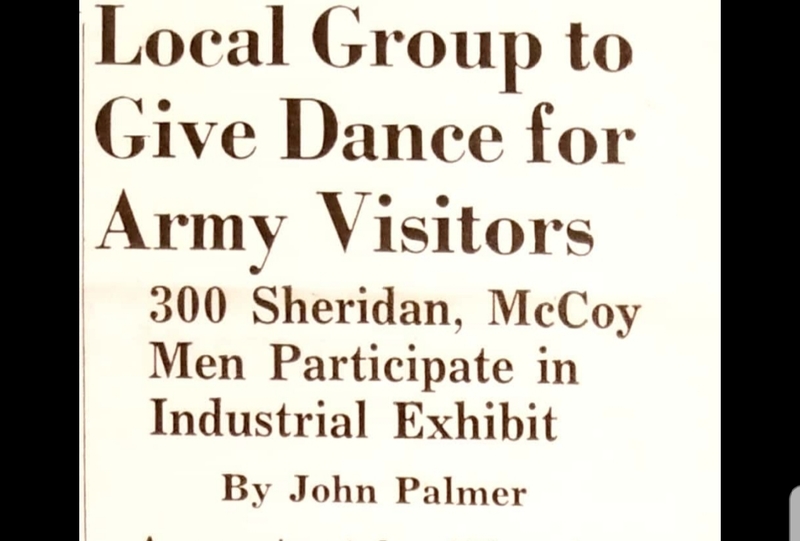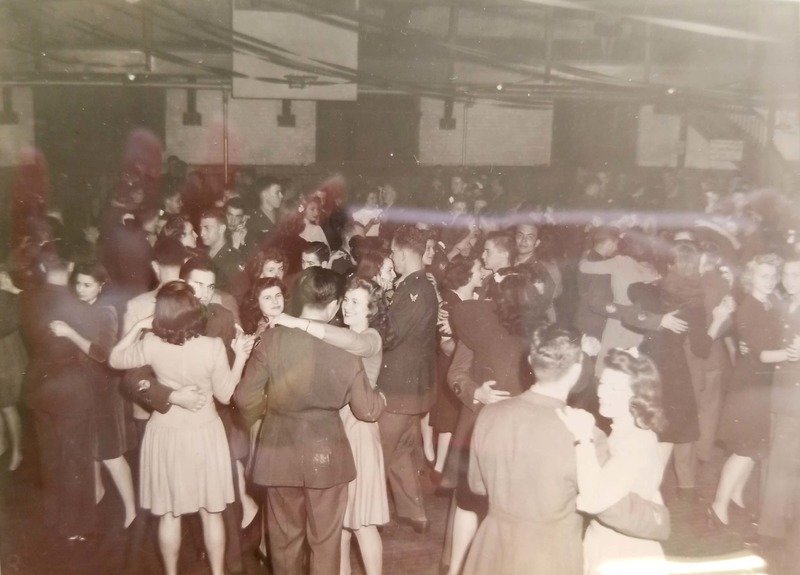Women During War
"War Touches a Campus"
This is an essay written by Beloit alumni Marcia Smithson who was a student during the attack on Pearl Harbor. The essay describes how life at the college changed drastically in terms of the students social lives and academics. In the essay, she describes how the male students quickly left school in order to join the military and how the women of the college grew closer in their attempts to comfort one another. She writes how she experienced many goodbyes and how friendships were fleeting because many of the male students and service men she befriended would die during the war either while still at school or quickly after graduation.
"Senior Bench"
The Senior Bench consisted of a group of seven women who were part of Mortar Board and were seen as the most outstanding in their class at the end of their junior year. They represented “the finest ideals of Beloit expressed in loyalty, honor, sportsmanship, and an attitude of good will towards their fellow students”. They devoted their attention that year to cooperating with the War Participation Board by making surgical dressings and meeting one evening a week to be instructed by Red Cross workers.
"Women's Curfew Changes"
The freshmen women at the college had a gender specific curfew in which they had to be in their dormitories with the lights out at a specific time each night. If this curfew was broken, the women received consequences that the men did not have to experience. Although the school was primarily focused around the men during this time specifically, they still designed controlling rules for the women that they did not put upon the men.
Dining Hall
The women students at Beloit College were given more traditionally feminized roles to do as jobs while the service men trained and occupied the more traditionally masculine roles. In doing so, the women were in charge of having jobs such as serving the men during meal times in the main dining room.
"Chapin Women Devise Program for Black Out Entertainment"
During the practice blackouts that the school would put on frequently, the women would get together in their dormitories and dance and quietly play records instead of going to bed early or studying like it was suggested from the air raid warrens. This was seen as a small act of defiance but gave the girls some sense of agency in a time when life was complicated in their scheduled days but uncertain futures.
"Local Group to Give Dance for Army Visitors"
During the war, college women were often asked to attend dances that were put on for soldiers who were visiting the college area. Visiting with the women were often used as a type of reward for the men after they had been training or fighting for a period of time which is why these dances or events were put on.

